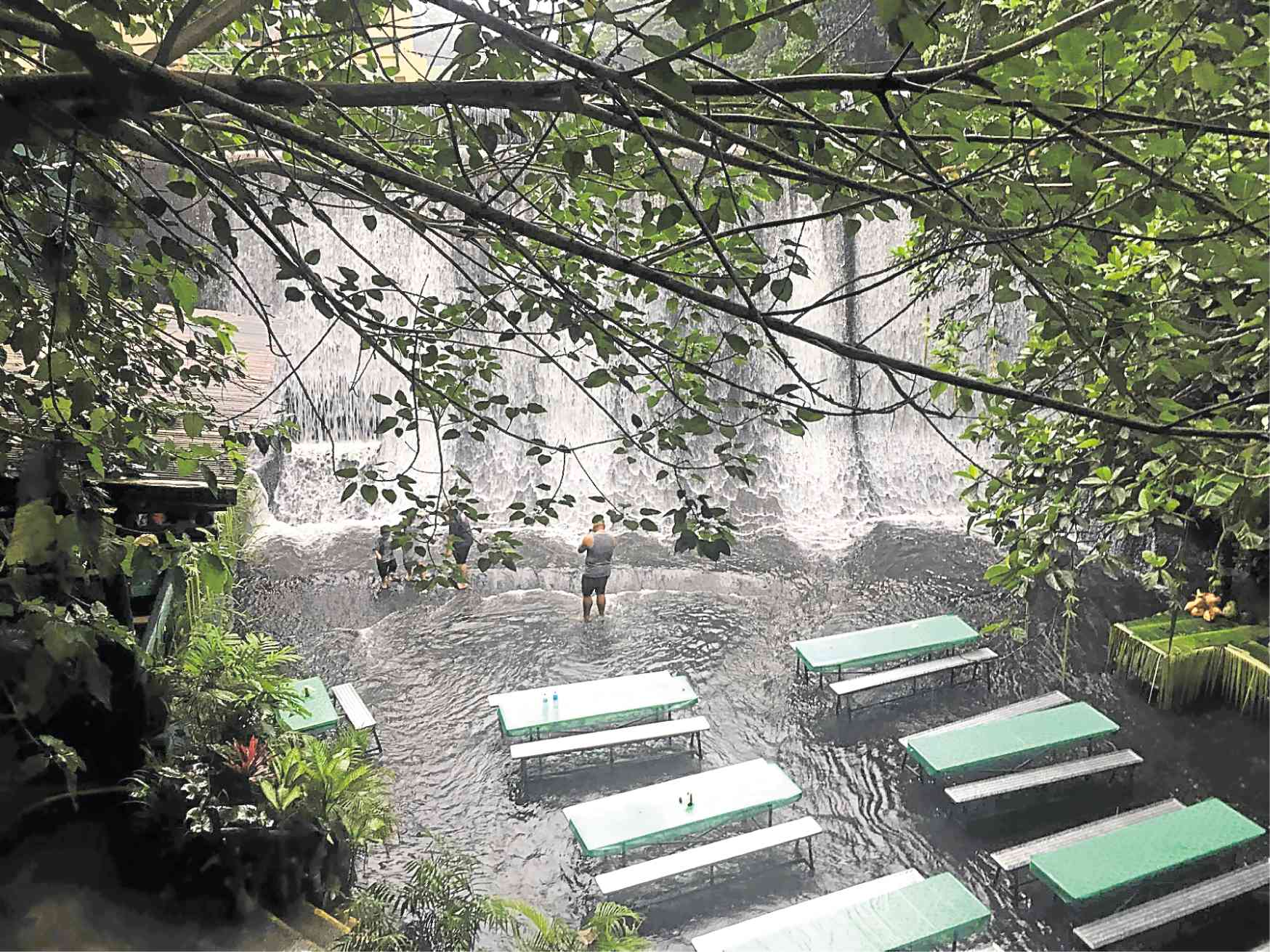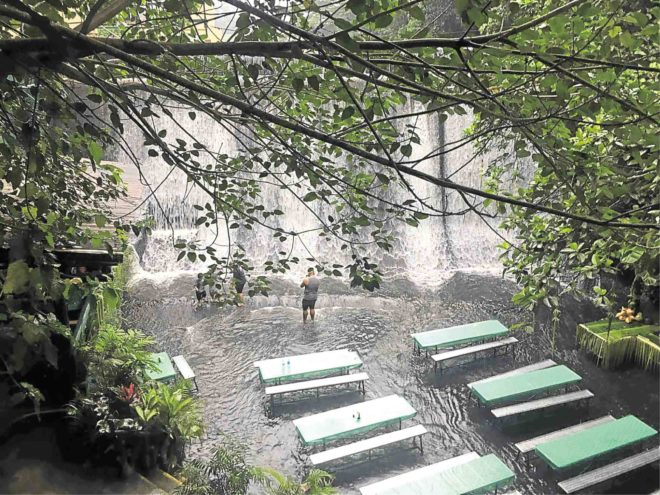
The first and only time that I visited Villa Escudero was in 1982—35 years ago!—for the 18th birthday of a friend, who eschewed the regular dance party for a two-night stay at the resort with a dozen of her close friends.
It was, to say the least, magical. We slept in cool, native-style cottages, and had our fill of Filipino food in the famous waterfall dining area, where you sat and ate while in ankle-deep water.
Most memorable was the experience of paddling out on bamboo rafts to the middle of the Labasin River, with its clean running water from the springs of Mount Banahaw, and just jumping in.
Recently, invited to return to check out what had changed, I welcomed the opportunity to reminisce.
I’ve seen resorts all over the Philippines, and the fact is, Villa Escudero Plantations and Resort remains a unique experience. It’s a self-contained, family-run working coconut plantation, established over hectares and hectares of land which Don Placido Escudero and his wife Doña Claudia Marasigan bought, according to legend, from a tribal king in the 1880s.

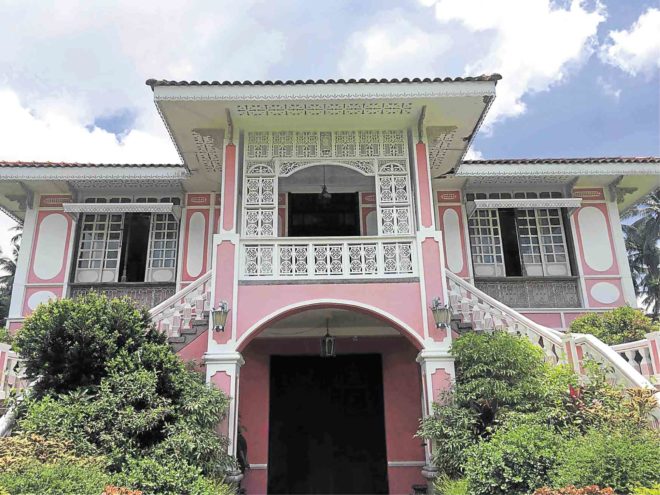
Pink mansion
It was Don Arsenio Escudero, son of the couple, and his wife Doña Rosario Adap, who started planting coconut in the early 1900s. A statue of the couple stands in front of the bright pink mansion, occupied by their son and the hacienda’s main resident, Don Conrado “Ado” Escudero.
After opening the estate to the public in 1981, Don Ado and his sisters continue to run the place, which has established a reputation as a charming showcase of Filipino cultural heritage, a mere two-hour drive from Manila.
I had the same welcome carabao ride, with the contented beasts of burden now helped along by hydraulic carts. After two trips, each carabao gets time off to wallow in their watering hole, I was happy to note.
The Filipino-style accommodations now have options with air-conditioning, which proved unnecessary during our stay, as the breeze was wonderfully cool.
No, there are no TV sets and refrigerators in the rooms. “That’s why we have only a three-star rating,” says Don Ado with a chuckle. But locking yourself in your room here would be a terrible idea.
The rafts are still there, but jumping into the river is no longer allowed due to its depth. And yes, we still stuffed our faces, kamayan-style, with eggplant salad, grilled tilapia, sinigang, and other comfort food, washed down by the ubiquitous coconut juice in its shell, our toes in the water.
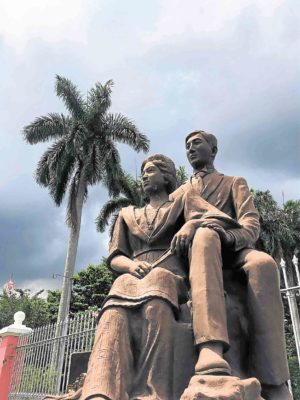
Probably the biggest concessions to the resort’s large market of day trippers are the two swimming pools—one for adults, and another creatively constructed one for children.
That, and the updated food offerings of food and beverage director Cocoy Ventura, a Cornell University business graduate and chef who cut his teeth in Napa Valley, before coming home to be closer to his family.
“Villa Escudero is already known as a haven for cultural preservation in terms of art and architecture,” says Ventura. “Why not for food?”
Thus, don’t be surprised to find Don Ado’s famed pancit buko or sampinit jelly (made from a local berry) served alongside dishes made from ingredients sourced locally.
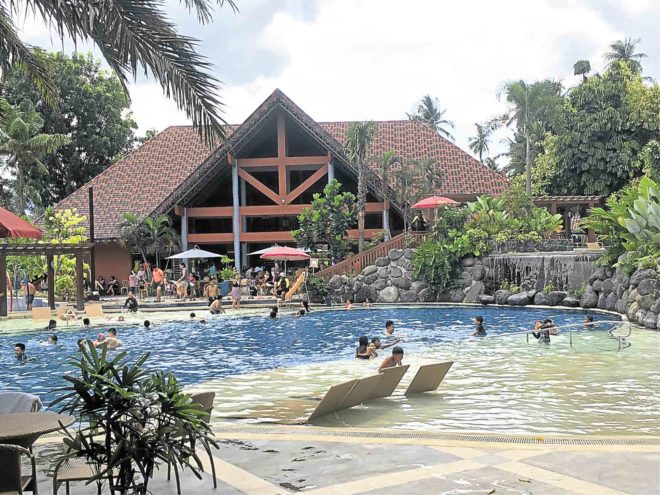
Obusan-trained
A big hit is the weekend show of Filipino dances, as faithful to the original form as they can get, having been researched and choreographed by no less than National Artist for Dance Ramon Obusan.
Obusan-trained dance master Nestor Cortez has been “stationed” here for 27 years, and has in turn trained generations of resort staff to perform classics like the favorite tinikling for delighted guests. “Would you believe some balikbayan are even moved to tears?” he reveals. “They say they remember their childhood.”
Visitors of any age would be missing a lot, however, if they didn’t leave the pool for a bit to visit two fabulous sites, which didn’t exist when I first visited.
One is Villa Escudero’s treasure trove of a museum for everything the Escudero couple collected in their lifetime—from stuffed animals and local hero Hermano Pule’s writings, to kitsch like money, teaspoons and china.
Noteworthy is the array of ceremonial clothes worn by every Philippine president from Emilio Aguinaldo. Yes, that tiny terno belonged to GMA.
As the museum guide told us, however, every Holy Week, the first floor is empty, as all the eye-popping, life-size religious figures are taken out for the grand procession. Worth examining is an Isabelo Tampinco sculpture of Christ’s third fall, face full of sorrow, and a stunning ivory Mater Dolorosa resplendent in black robes embroidered with gold.
Then there’s Casa Consuelo, the Pamintuan House, built in the 1880s and transplanted from Angeles, Pampanga, in 2011, and now an exquisite showcase of a gracious bygone age.
The pink color and fine latticework are a delight to behold. There’s a sunroof in the middle courtyard, lighting up the structure.
My favorite curiosity: a wood-bound dictionary in Don Arsenio’s study.
And my favorite moment in Villa Escudero: sipping delicious coffee, sweetened with pulled molasses, at Cafe Indigo, looking out at the lush greenery—and giving thanks that some things haven’t changed just yet.
Villa Escudero Plantations and Resort is at Km. 91, Tiaong, Quezon; tel. 5230392 or 5210830; e-mail [email protected]; website villaescudero.com.

